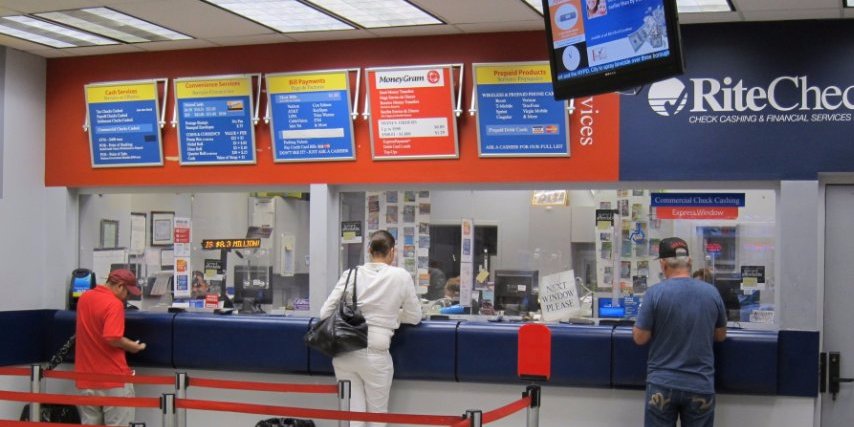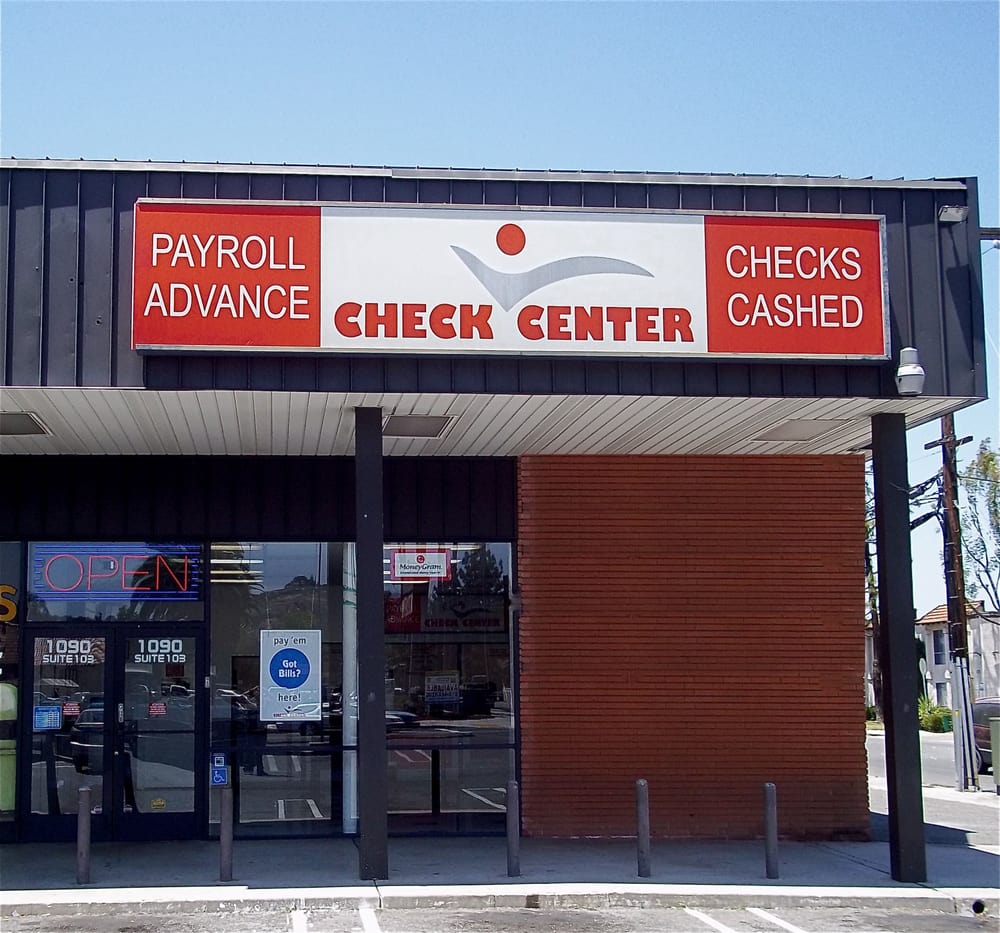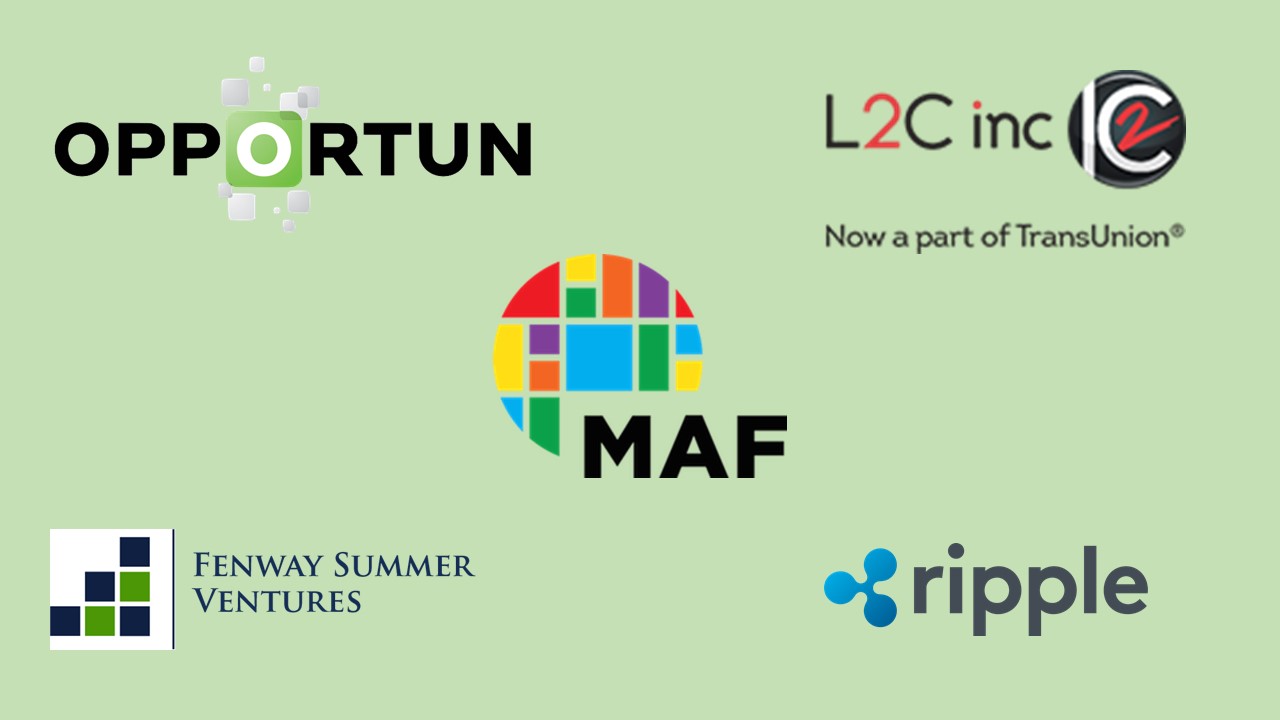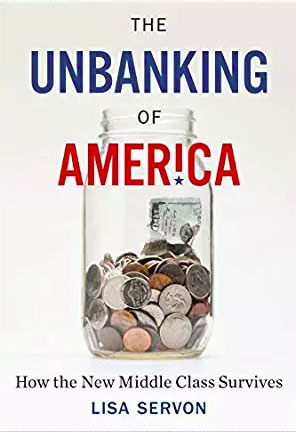What Financial Service Providers
Can Learn from Payday Lenders

“Money Has a Lot of Power”An Interview with Carmen Velasco
June 5, 2018
How the World’s Best Nonprofit Finds the Right People to Help
June 22, 2018A Review of The Unbanking of America
Do Check Cashing Stores Exploit or Provide a Needed Service?
It takes courage to develop financial products for those who live on the margins, people whose low incomes, irregular cash flows and vulnerability cause them to have financial needs different from most of the population. Often the only ones who display this courage are either do-gooders or extorters. Do-gooders think they can make up for market failures with their passion and virtue. Extorters exploit the power imbalance they have over people who desperately need access to finance by charging high rates and entrapping people in debt.The funny thing is, sometimes those seeking only their own profits end up developing more reliable and sustainable products than those who seek to help the downtrodden. And sometimes those who seek to do good need to first learn some important lessons from those they consider to be extorters.
That’s the lesson Lisa Servon learned when she began teaching her graduate finance class at the University of Pennsylvania about check cashing and payday lending stores. Most of her students thought that these stores represent the worst elements of our financial system. They prey on the vulnerability of poor and marginalized populations, making money off others’ misfortunes. Then Professor Servon invited Joe Coleman, owner of the Ritecheck chain of check cashing stores in New York, to speak in her class.
Coleman explained to Servon and her students the key role that a check cashing store plays for people with modest or irregular incomes. He spoke so persuasively that Servon came away confused. Were check cashing and payday loan stores predatory institutions, or did they serve an important role in providing financial services for those who could not get them anywhere else?
What do you think? At this end of this post, I will ask for your opinions about check cashing stores in the comments section. Keep that in mind as you read on. Professor Servon decided to find out for herself. She called up Coleman and asked if she could work as a teller in one of his stores for three months. Joe readily agreed. Thus began a journey where Servon ended up working with check cashers, payday lenders, and on a hotline for victims of predatory loans. She also had one of her research assistants join a rotating savings and credit association (ROSCA) to learn more about how they worked and why people would join them.
- Customer service: The tellers got to know the clients by name and greeted them warmly when they came in the store. They inquired about family members and work opportunities. They could make adjustments to accommodate clients facing particularly difficult times. In contrast, when these same people went into a bank they felt unnoticed and unwanted.
- Transparency: The store posted all its charges in a sign with big letters on the wall. The clients had no problem calculating what they would have to pay and how much cash they would receive back on each transaction. In contrast, when if they opened an account at a bank they would receive a 15-page disclosure statement, with all the charges hidden in fine print around words they did not understand.
- Reliability: When clients came in to cash a check, they paid a fee and got their cash. They had money that they could use immediately to pay their expenses. Small business owners found this helpful when they got paid by their customers on a Friday and had to pay their workers the same day. If they deposited their checks in a bank, they would have to wait the whole weekend, plus two more business days before their checks cleared. Clients found that they could not predict when their bank would charge them, or when they would receive credit for a deposited check. For people whose average balance is close to zero, this means running a risk on any day of multiple overdraft charges of $30 each.

Joe Coleman summed up these differences to Servon by pointing out the basic difference in business models between banks and check cashing stores. Banks make money by collecting as much in deposits as they can and investing that money. That makes them most interested in serving customers who can deposit large amounts of money. Their business model makes it too expensive for them to serve people with low balance accounts and lots of transactions. Forced by regulators to provide accounts for all, they find ways to ding these people with multiple fees to generate more income. (In her research Servon found that, up until it was outlawed by regulators, many banks deployed software that would time the order in which they processed checks so that they could maximize the amount they earned in overdraft fees.). In contrast, check cashing stores build their business model on multiple small interactions with the same people. Repeat business is important to their bottom line, so they treat their customers well. They earn small amounts on every transaction, so they want to process as many transactions as possible.


Servon sums up what she learned about providing financial services for the marginalized and the financially insecure like this:
As I read the book, I thought about how Servon’s observations were true for those that live with insecure financial means in other countries as well. Banks have long operated with business models that do not serve those whose incomes are small, irregular and unpredictable (as Rutherford et. al. describe in Portfolios of the Poor). Which begs the question, why are we measuring how many of these people are unbanked? Why does the World Bank measure its Universal Financial Inclusion Goal by the percentage of adults who have accounts in a regulated financial institution? As Servon says "The problem is not that people are unbanked, but that they lack high-quality, affordable financial services and the resources to attain the stability that once defined what it meant to be middle class." Our goal should be that all people have access to financial services appropriate to them, not that they all have accounts in banks that have no interest in serving them.
Servon comes up with some recommendations for how the US could make its financial system more useful to those with low, irregular and unpredictable incomes.
And What About Payday Lenders?
Since New York does not allow payday lending, Servon went to Oakland, California to work in the Check Center chain of stores. There she saw the value and the dangers of this type of lending. The customers who came to the payday lenders either had very low credit scores or no credit score at all. Living paycheck to paycheck, they had no other alternatives when hit with an unexpected bill, like a car repair or a child's hospital fees. On the other hand, the payday lending model often trapped their clients in a debt cycle. They provided emergency cash when needed, charging a large fee for the service. The loan terms require the full amount to be repaid within a month, but few clients can earn enough in a month to pay their own ongoing expenses and the full amount of the loan. They roll over the loan, paying the fee again for each month they extend the loan. This works out to an average APR of 300 to 600 percent. Just paying the interest becomes a burden for many clients.
Changing for the Better
Next Servon met with some of the disrupters in the financial services industry, app developers and alternative finance providers that target the market that does not get good service from banks. These included those that offer new loan products to replace the need for payday loans (Opportún and Fenway Summer), a credit scoring model that works for those with low and irregular incomes (L2C), a system that moves money immediately in real time and thereby eliminates waits on check clearing (Ripple), and a program that formalizes the rotating credit and savings system in a way that provides a credit history for participants (Mission Asset Fund). Servon noticed two key differences between these innovators and other financial institutions. First, solving a social problem served as their primary motivation, rather than making lots of money. Second, many of their leaders had spent a part of their lives living with financial uncertainty. They viscerally understood the predicaments of the people they sought to serve.
Servon sums up what she learned about providing financial services for the marginalized and the financially insecure like this:
We need to rethink our assumptions about the way people {with financial uncertainty} make their decisions. Most people have very good reasons for what they do with their money. The job of policymakers and financial service providers is first, to understand these choices and the needs that drive them without prejudgment, and second, to make financial systems work better and enable people to make sound choices.
- Change the relationship between banking and government – If banks do not find it profitable to serve low income customers, the federal government could either:
- subsidize banks for the cost of providing accounts to these clients;
- provide regulatory and financial help to banks that focus on this client segment as part of their mission; and/or
- allow post offices to also provide financial services, as they did for fifty years in the early 20th century.
- Enable better financial decision making – Create clear standards for disclosing fees and charges for financial products, rate banks on how safe and affordable they and require banks to put their rating in their windows and online, create a system where each person has control over their own, unique financial identity, provide financial coaching for those who need help to access financial services.
- Create a sandbox for innovators – The high cost of complying with government regulations prevents many innovators from turning their ideas into new companies. The US could follow the example of the UK Financial Conduct Authority, which has created a “regulatory sandbox” where businesses can test new products without being subject to all the financial regulations that might apply. This allows reduces the time and costs of developing and testing a new product, giving innovations space to prove their value and attract the funding they need to expand.
Your Thoughts
What do you think?- Do you think check cashing stores and payday lenders exploit people in poverty or provide them with a needed service?
- What should financial regulators do to encourage businesses to serve this segment of the market, while also preventing exploitation?
- What businesses do you know that do a good job of serving clients with low and irregular income?



2 Comments
The answer to your first question is complicated. It became more complicated for me when I read this book and also the “U.S. Financial Diaries”. We have been quick, and sometimes rightfully so, to create monolithic pictures that demonize the role of payday lenders and check-cashing entities when what this book shows is the critical role they play in helping people facilitate the (un)anticipated inconsistencies of their income. There are some bad actors out there to be sure, but the sector and especially financial service providers would do well to pay attention to the customers who frequent these institutions to learn more about their financial needs and behaviors.
Thanks, Wendy. I agree. One of the chief problems I see is that most bank-led financial products are based on people who receive regular salaries. Weekly or monthly payments are a lot easier for those who receive weekly or monthly pay. Those on the margins, the ones who go to check cashing stores and payday lenders, have irregular incomes that don’t fit traditional financial services. They are willing to pay high costs to receive the flexibility they need.